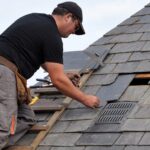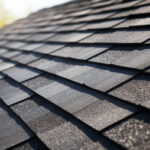Having a small hole in your roof can be problematic, especially when it leads to leaks and subsequent water damage inside your home. Learning how to fix a small hole in roof from inside is crucial for preventing larger, costlier issues. This handy guide will walk you through the steps necessary to repair a roof hole from the inside, ensuring a secure and safe environment for you and your family.

1. Identifying the Problem
The first step in repairing any roof damage is accurately identifying the problem. Small holes in the roof can often be the result of weather, debris, or wear and tear. To locate them, look for water stains on your ceiling or walls. Once identified, you can tackle the issue directly.
2. Gather Necessary Tools and Materials
Before starting your repair, ensure you have the right tools and materials. Essential items include a flashlight, roof sealant, a caulking gun, a putty knife, and a ladder. These tools will help you execute your repair efficiently from inside your home.
2.1 Safety Precautions
Safety should always be a priority. Ensure your ladder is stable and secure. Wearing protective gear, such as gloves and goggles, will protect you from debris and harmful substances. If the hole is near electrical wires, be extra cautious to avoid accidents.
3. Inspect the Roof
Use a flashlight to thoroughly inspect the area surrounding the hole. Look for signs of water damage, mold, or structural weakness. Fixing the small hole in the roof effectively requires a comprehensive understanding of the extent of damage both on the surface and around the hole. You might also want to read more on EPDM roofing and its benefits for more durable solutions.
4. Clean and Prepare the Area
Clean the affected area by carefully removing debris and dust. This step is crucial for ensuring the adhesive properties of the roof sealant. A clean surface guarantees better patch adhesion, leading to a more durable fix.
4.1 Removing Old Sealant
If there’s any old or damaged sealant around the hole, remove it using a putty knife. This will make way for new sealant application, ensuring a tighter, more effective seal. Read more on preparing roofs efficiently here.
5. Applying Roof Sealant
Once the area is clean and prepared, apply a generous amount of roof sealant over the hole using a caulking gun. Smooth the sealant with a putty knife to ensure even coverage. This step is vital for creating a strong barrier against water penetration.
5.1 Ensuring Sealant Thickness
When applying sealant, ensure it is thick enough to cover the hole completely. Multiple layers may be necessary. Allow each layer to dry before applying the next for maximum effectiveness.
6. Checking the Repair
After the sealant has dried, inspect the repair to ensure there are no gaps or signs of further damage. Use a flashlight to check for light passing through the sealed area. No light should be visible if the repair was successful. For additional guidance on roof repairs, visit Angi.
6.1 Signs of Successful Repair
A successful repair is indicated by the absence of leaks during the next rainfall and no visible damage to the patched area. Keep an eye on this area in future inspections and address any recurring issues swiftly.
7. When to Call a Professional
If DIY repairs don’t solve the problem, it might be best to call a professional. They have the experience and tools to handle more complex repairs. Seeking professional help is advised if safety becomes a concern or if the roof hole expands beyond your capacity to repair.

FAQs
Can I fix a roof hole during winter?
Yes, but additional care is required as sealant may not adhere properly in cold, wet conditions. Consider using winter-specific sealants and follow safety precautions avoiding slippery conditions.
How long does a DIY patch last?
With proper techniques, a patch can last several years. However, regular inspections are crucial to ensure its integrity, especially after severe weather events.
Is it worth hiring a professional for a small hole?
For small and straightforward holes, a DIY fix is often sufficient. However, hiring a professional can prevent larger future problems if you lack confidence or experience.
This article contains affiliate links. We may earn a commission at no extra cost to you.








